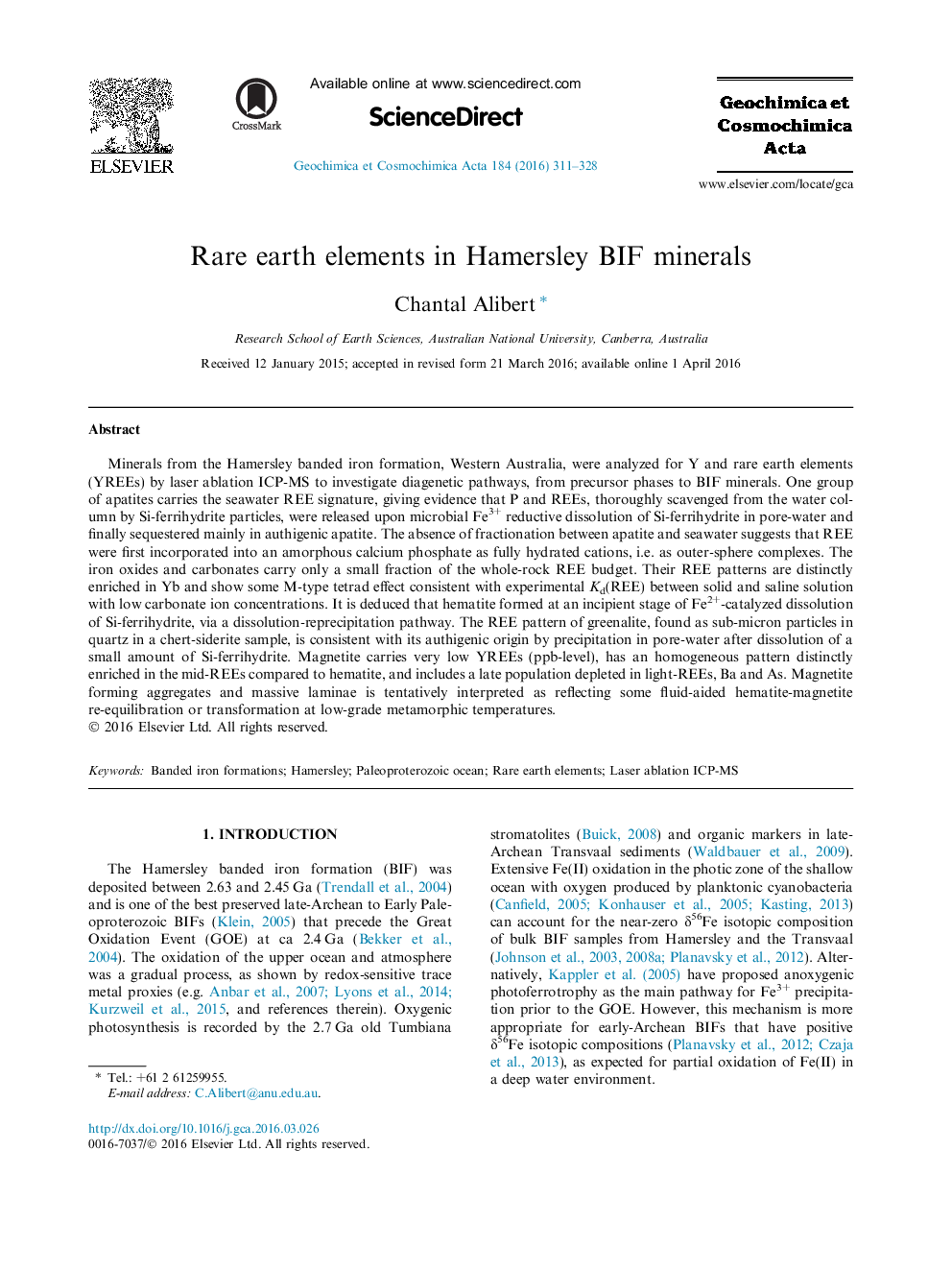| Article ID | Journal | Published Year | Pages | File Type |
|---|---|---|---|---|
| 4701818 | Geochimica et Cosmochimica Acta | 2016 | 18 Pages |
Minerals from the Hamersley banded iron formation, Western Australia, were analyzed for Y and rare earth elements (YREEs) by laser ablation ICP-MS to investigate diagenetic pathways, from precursor phases to BIF minerals. One group of apatites carries the seawater REE signature, giving evidence that P and REEs, thoroughly scavenged from the water column by Si-ferrihydrite particles, were released upon microbial Fe3+ reductive dissolution of Si-ferrihydrite in pore-water and finally sequestered mainly in authigenic apatite. The absence of fractionation between apatite and seawater suggests that REE were first incorporated into an amorphous calcium phosphate as fully hydrated cations, i.e. as outer-sphere complexes. The iron oxides and carbonates carry only a small fraction of the whole-rock REE budget. Their REE patterns are distinctly enriched in Yb and show some M-type tetrad effect consistent with experimental Kd(REE) between solid and saline solution with low carbonate ion concentrations. It is deduced that hematite formed at an incipient stage of Fe2+-catalyzed dissolution of Si-ferrihydrite, via a dissolution-reprecipitation pathway. The REE pattern of greenalite, found as sub-micron particles in quartz in a chert-siderite sample, is consistent with its authigenic origin by precipitation in pore-water after dissolution of a small amount of Si-ferrihydrite. Magnetite carries very low YREEs (ppb-level), has an homogeneous pattern distinctly enriched in the mid-REEs compared to hematite, and includes a late population depleted in light-REEs, Ba and As. Magnetite forming aggregates and massive laminae is tentatively interpreted as reflecting some fluid-aided hematite-magnetite re-equilibration or transformation at low-grade metamorphic temperatures.
